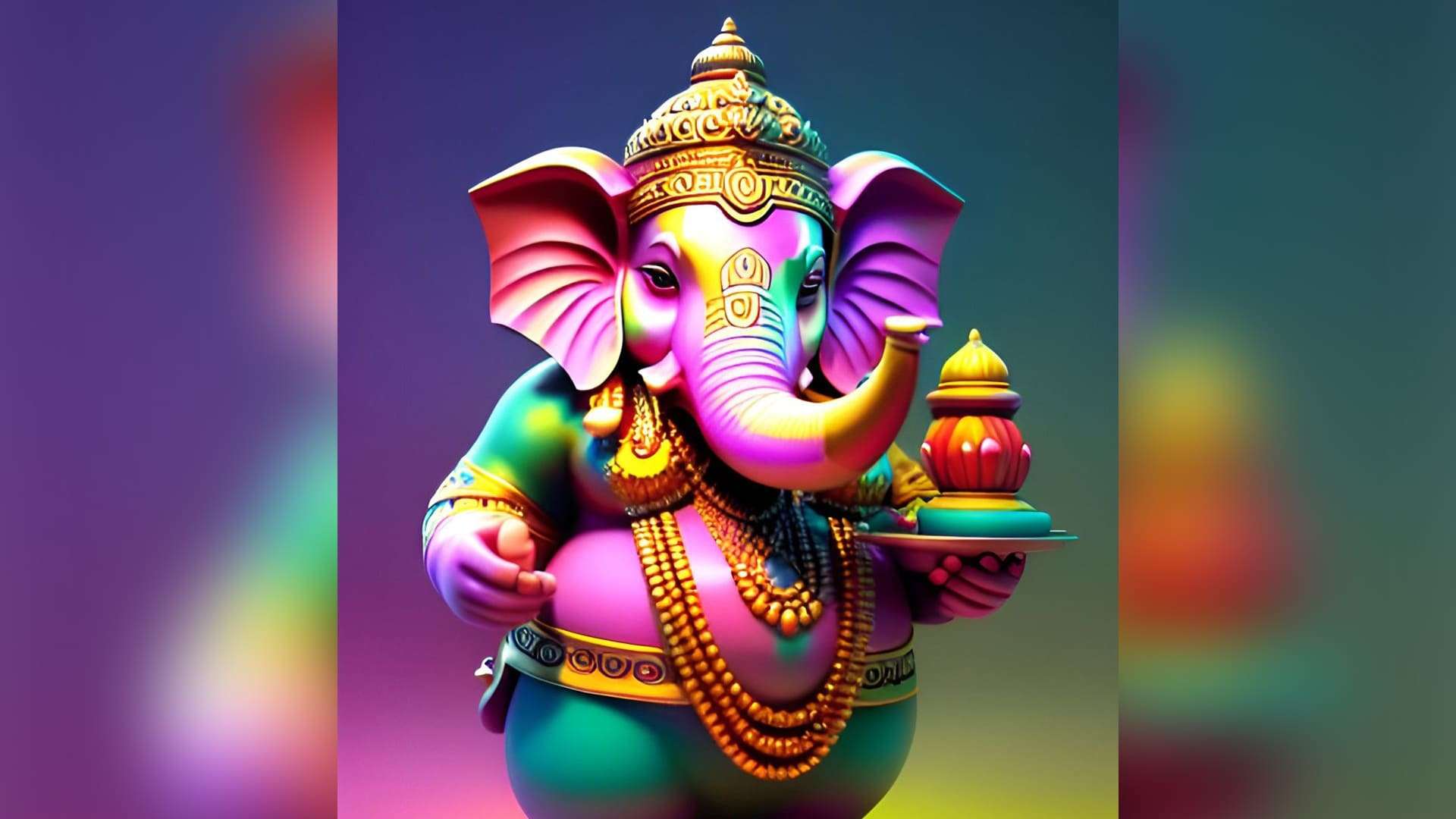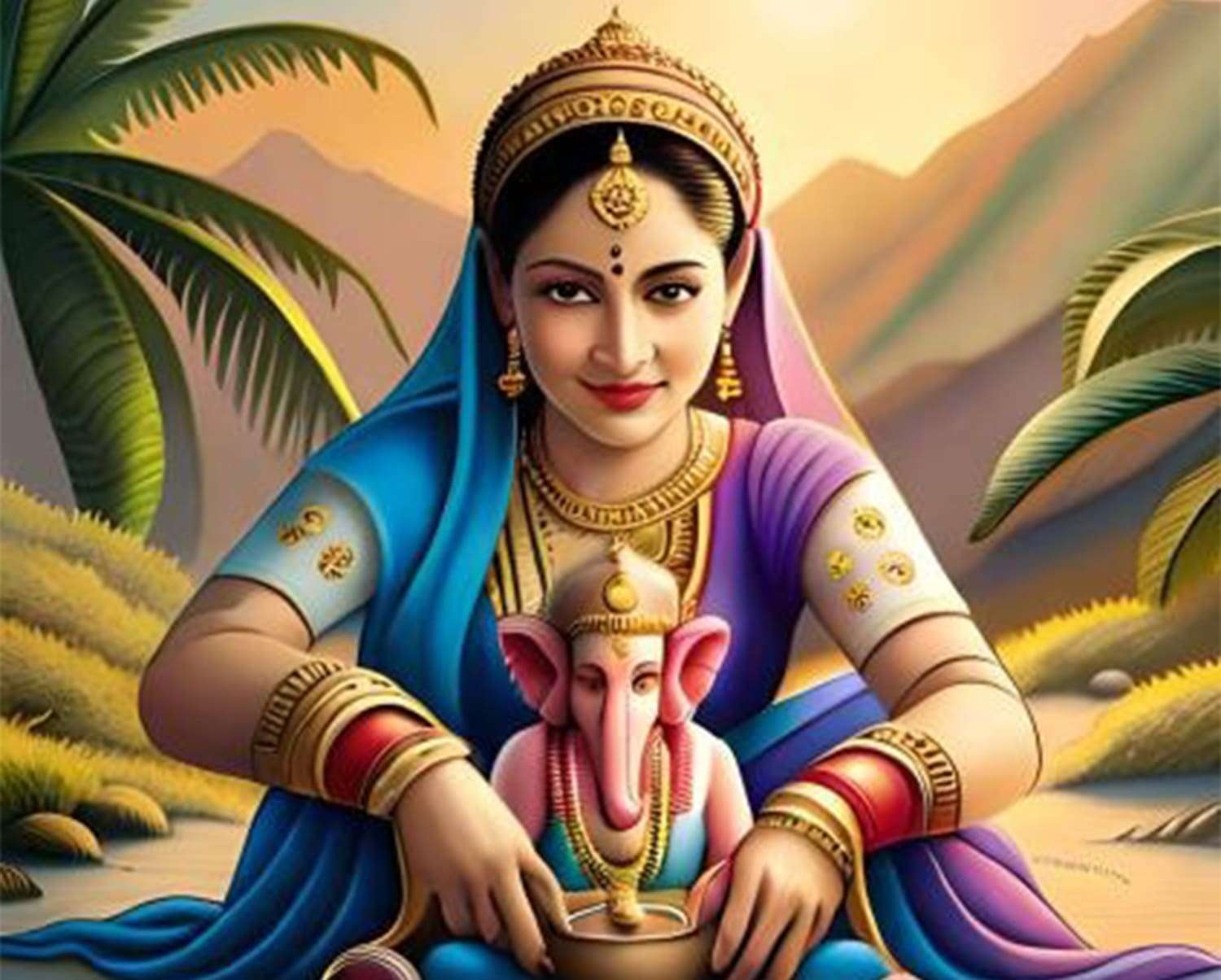From Sandalwood to Divinity: The Captivating Story of Lord Ganesha's Birth

The birth of Lord Ganesha is a captivating tale in Hindu mythology, celebrated across cultures and generations. The story varies in its details, but its essence remains consistent.
According to a widely known version, Goddess Parvati, wife of Lord Shiva, desired to have a child. However, as Shiva was immersed in deep meditation and ascetic practices, he was not focused on family life. Determined to fulfill her wish, Parvati decided to create a son through her own divine energy.
Parvati began a profound period of meditation and penance. Her devotion and longing for a child were so intense that her energy transformed into a powerful and radiant form. This luminous energy coalesced into the figure of a young boy, embodying divine qualities and the essence of Parvati’s devotion.
This divine child, named Ganesh, was unique in appearance. He was often depicted with an elephant head, symbolizing wisdom, strength, and intelligence. The elephant head is believed to reflect Ganesh’s ability to perceive both the ordinary and profound aspects of life.
As the story goes, Parvati’s creation of Ganesh was her way of fulfilling her maternal yearning, and Ganesh became a source of immense joy and protection for her. His form and presence embodied her devotion and energy.
The birth of Ganesh exemplifies the power of devotion and the deep connection between a mother and her child. It also highlights the belief that the divine can manifest in various forms to fulfill the wishes of the devoted.
Throughout Hindu tradition, Ganesh’s birth is celebrated during the festival of Ganesh Chaturthi, where devotees offer prayers, sweets, and seek his blessings. The story of his unique birth continues to inspire people with its themes of devotion, maternal love, and the potential for the divine to manifest in unexpected ways.
Symbolism of Lord Ganesha: This topic involves exploring the various symbols associated with Lord Ganesha, such as his elephant head, potbelly, modak (sweet), broken tusk, and the symbolism behind each of these attributes. It can also touch on the symbolism of Ganesha’s mount, the mouse, and his posture.
Ganesha Chaturthi: Celebrating the Elephant God: This topic is about the significance and celebration of Ganesha Chaturthi, a Hindu festival that marks the birth of Lord Ganesha. You can discuss the rituals, customs, and cultural importance of this festival, along with how it’s celebrated in different parts of India.

Obstacles and Beginnings: Lessons from Ganesha’s Story: This topic focuses on the narrative of how Ganesha acquired his elephant head and his broken tusk. It draws insights from this story to explore themes like overcoming obstacles, adapting to challenges, and embracing new beginnings.
Different Cultures: This topic delves into how Lord Ganesha is revered not only in Hinduism but also in other religious traditions, such as Buddhism and Jainism. It could also touch on how his symbolism transcends cultural boundaries and resonates with people worldwide.
Art and Iconography: Here, you would explore the artistic representations of Ganesha across different art forms, including ancient sculptures, paintings, and modern interpretations. Discuss how his iconography has evolved over time.
Mantras and Prayers: This topic involves sharing popular mantras, prayers, and chants dedicated to Lord Ganesha, along with explanations of their meanings and the spiritual significance behind them.
Role in Removing Obstacles: Discuss how Ganesha is invoked before new ventures and important undertakings to seek his blessings in overcoming obstacles and ensuring success. Explore the deeper spiritual meaning behind this practice.
Ganesha and Wisdom: This topic explores Ganesha’s association with wisdom, knowledge, and learning. You can discuss how his role as the patron of arts and sciences can inspire personal growth and education.
Favorite Foods: Exploring Traditions and Symbolism: Dive into the tradition of offering specific foods, especially modak, to Lord Ganesha and explain the symbolic meanings behind these offerings.
Global Appeal: This topic discusses how Lord Ganesha’s symbolism and popularity have transcended cultural and geographical boundaries, attracting people from different parts of the world.
Eco-Friendly Celebrations: Explore the growing trend of celebrating Ganesha Chaturthi in an eco-friendly manner, including the use of clay idols and sustainable practices. Discuss the environmental significance of such celebrations.
Influence in Pop Culture: This topic explores how Lord Ganesha is depicted in movies, TV shows, literature, and other forms of popular culture. Discuss how his presence in pop culture reflects and influences societal perspectives.
Consorts and Family: Dive into the lesser-known aspects of Ganesha’s family, including his consorts (like Siddhi and Buddhi) and siblings (like Karthikeya), and their roles in Hindu mythology.
Modern Life: Discuss how Lord Ganesha’s teachings and symbolism can be applied to overcoming challenges and adapting to the demands of modern life.
Yoga and Meditation: Explore how Ganesha is invoked at the beginning of yoga sessions and meditation practices to seek his blessings for a focused and obstacle-free practice. Discuss the spiritual connection between Ganesha and mindfulness.
Sacred Melodies: Reverence and Devotion in the Ganesh Aarti
जय गणेश, जय गणेश, जय गणेश, देवा .
माता जाकी पारवती, पिता महादेवा
Jai Ganesh, Jai Ganesh, Jai Ganesh Deva,
Mata Jaki Parvati, Pita Mahadeva.
Glory to Lord Ganesh, Glory to Lord Ganesh, Glory to Lord Ganesh, the Divine. Mother Parvati is your mother, and Lord Mahadeva (Shiva) is your father.
एकदन्त, दयावन्त, चारभुजाधारी,
माथे पर तिलक सोहे, मूसे की सवारी
Ekadanta Dayavanta, Char Bhujadhari,
Mathe Sindura Sohe, Muse Ki Savari.
You have one tusk and are compassionate, You have four arms and wear a crown. A vermilion mark shines on your forehead, and a mouse is your vehicle.
पान चढ़े, फूल चढ़े और चढ़े मेवा,
लड्डुअन का भोग लगे, सन्त करें सेवा
Pan Chadhe, Phul Chadhe, Aur Chadhe Meva,
Ladduan Ka Bhog Lage, Sant Karen Seva.
People offer betel leaves, flowers, and fruits, The offering of laddu (sweet) is made, and saints serve you.
अंधे को आँख देत, कोढ़िन को काया,
बाँझन को पुत्र देत, निर्धन को माया
Andhan Ko Ankh Det, Kodhin Ko Kaya,
Banjhan Ko Putra Det, Nirdhan Ko Maya.
You grant sight to the blind, and a body to the limbless, You bless the barren with children, and bestow wealth upon the poor.
सूर’ श्याम शरण आए, सफल कीजे सेवा,
जय गणेश जय गणेश जय गणेश देवा
Surya Shaam Sharan Aye, Safal Kije Seva,
Mata Jaaki Parvati, Pita Mahadeva.
Sunlight or dusk, people seek refuge in you, May our service be successful. Mother Parvati is your mother, and Lord Mahadeva (Shiva) is your father.
